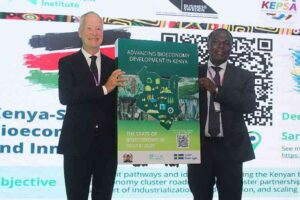
Uganda and Kenya have jointly approved the feasibility study for the proposed Multinational Expressway that will link the two countries via the Northern Corridor, paving the way for one of East Africa’s most ambitious transport infrastructure projects.
The announcement was made during a Market Sounding Conference held in Kampala, where government officials, financiers, and private sector leaders endorsed the nearly 200-kilometre expressway as a top regional priority.
The project, supported by the African Development Bank (AfDB) and implemented under the East African Community (EAC) framework, is being financed through a grant from the NEPAD Infrastructure Project Preparation Facility (NEPAD-IPPF).
Once developed, the expressway will redefine mobility and trade between Uganda and Kenya, easing congestion, cutting travel time, and facilitating smoother movement of goods and people along one of East Africa’s busiest transport corridors the Trans-African Highway and the EAC Regional Trunk Road Network.
Keep up with the latest headlines on WhatsApp | LinkedIn
The feasibility studies recommend major upgrades on both sides of the border. In Uganda, a new 60-kilometre greenfield expressway will be developed between Jinja and Busesa through a Public-Private Partnership (PPP) arrangement.
The plan also includes dualling the Busesa-Malaba and Busitema-Busia sections, while the Lwakhakha-Bumbobi road will remain a single carriageway.
On the Kenyan side, the works will involve dualling the Kisumu Bypass and upgrading the Kimaeti-Lwakhakha road to bitumen standards.
The Busia and Malaba One Stop Border Posts will also be rehabilitated to enhance clearance efficiency and trade facilitation.
Speaking at the event, Uganda’s Minister for Works and Transport, Gen. Katumba Wamala, emphasized the strategic importance of the Northern Corridor, describing it as “the main transport artery for Uganda and the Great Lakes Region, connecting Kenya, Uganda, Rwanda, Burundi, the DRC, and South Sudan to the port of Mombasa.”
He added that the project aligns with Uganda’s Vision 2040, which aims to modernize the national road network to world-class standards and achieve an average paved road density of 100 kilometres per 1,000 square kilometres.
“The active participation of the private sector through Public-Private Partnerships and other blended financing models will be critical,” he said.
On his part, Hon. Andrea Aguer Ariik Malueth, the EAC Deputy Secretary General in charge of Infrastructure, Productive, Social, and Political Sectors, underscored the need to design a “smart corridor” that integrates digital technology, safety, and social inclusion.
“Eighty percent of projects fail at the preparation stage. The support provided by EAC Development Partners has enabled the Community to prepare high-quality, bankable regional infrastructure projects that attract both public and private financing,” he noted.
Participants at the conference reviewed findings from the feasibility studies, which included traffic projections, environmental and social impact assessments, and cost estimates.
These confirmed the project’s strong technical and economic viability, with the expressway expected to catalyse regional trade and stimulate investment along the corridor.
Eng. Charles Obuon, Director of Public-Private Partnerships at the Kenya National Highways Authority, said the expressway would play a catalytic role in bridging cross-border infrastructure gaps.
“Regional transport networks remain poorly connected due to missing links. This project will catalyse economic growth and enhance the competitiveness of the EAC region,” he remarked.
Similarly, Eng. Charles Wani, Commissioner for National Roads at Uganda’s Ministry of Works and Transport, stressed that large-scale projects of this nature cannot be achieved in isolation.
“We must embrace PPPs and blended financing models to deliver transformative infrastructure,” he said.
Sign up for free AllAfrica Newsletters
Get the latest in African news delivered straight to your inbox
Success!
Almost finished…
We need to confirm your email address.
To complete the process, please follow the instructions in the email we just sent you.
Error!
There was a problem processing your submission. Please try again later.
The expressway forms part of a broader EAC initiative to expand multinational road corridors that support trade, investment, and integration.
Other key regional corridors under development include the Arusha-Namanga-Athi River (235 km), Voi-Taveta/Holili-Moshi-Arusha (240 km), Malindi-Lungalunga-Tanga-Bagamoyo (400 km), and the Masaka-Mutukula-Kyaka corridor linking Uganda and Tanzania.
Collectively, these routes form the backbone of the EAC’s regional infrastructure programme, designed to reduce transport costs, attract private investment, and accelerate the free movement of goods and people across the region.
The approved feasibility study now sets the stage for the Uganda-Kenya Expressway’s next phase mobilising financing and commencing detailed design marking a significant milestone in East Africa’s journey toward seamless regional connectivity and economic transformation.





